Monthly archives: November 2024
National Occupational Therapy Week – 4-8 November 2024
Occupational Therapy plays a vital role in health, social care and society. It prioritises prevention and early intervention, helping people to better manage their health and reach their goals.
At the Trust, we have around 100 Occupational Therapists forming a key part of our Allied Health Professional (AHP) workforce. Our OTs work in a wide range of multidisciplinary teams both in our acute and community services, playing a crucial role in preventing patients needing to come into hospital and helping them to leave hospital in a safe and timely way.
Thank you to all our OT colleagues at SWB and wishing you a very happy end to Occupational Therapy Week 2024!
Health Visiting SystmOne Superusers – Award winners

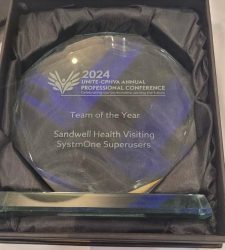 The Sandwell Health Visiting SystmOne Superusers recently won the Team of the Year award at the Unite-CPHVA Excellence Awards 2024.
The Sandwell Health Visiting SystmOne Superusers recently won the Team of the Year award at the Unite-CPHVA Excellence Awards 2024.
The team were invited to the Unite-CPHVA Conference taking place over 6/7 November following their nomination and walked away winners!
Massive congratulations to the team, including:
Team leaders –
- Gladys Mafundu
- Keturah Gardner
- Maxine Duffield
Clinical Lead for Health Visiting –
- Yvonne Copeland
Former Team Leader (returned as Health Visitor) –
- Sandra Mason
Moving day roles

Ahead of Sunday’s move, we’re informing colleagues of crucial roles and responsibilities that come with these.
The Global Sender and Global Receiver – teamed up with the HCR sender and receiver. Help control the speed and sequence of the move and keep control hub updated as each ward transfers.
The Unit Sender and Unit Receiver – responsible for patient-related decisions. The sender supports patients and staff for the transfer. The receiver assists staff in getting patients settled into the new ward.
The Nurse Escort – escorts the patient, their essential belongings, and paperwork throughout the duration of the transfer. Responsible for patient care until they give a report to the nurse at the patient’s new ward. Will operate in a loop, and conduct multiple transfers throughout the day, returning to the existing site marshalling station each time.
Transport work in teams of two – deployed by HCR from the Marshalling Station to for portering of patients in bed from their ward to the ‘Bed Transfer Station’ near the Main Entrance. Following this, the team returns to the Marshalling Station.
The EMRT – dedicated to the patient transfer sequence and strategically placed on the 5th level of MMUH to ensure immediate reaction if called upon.
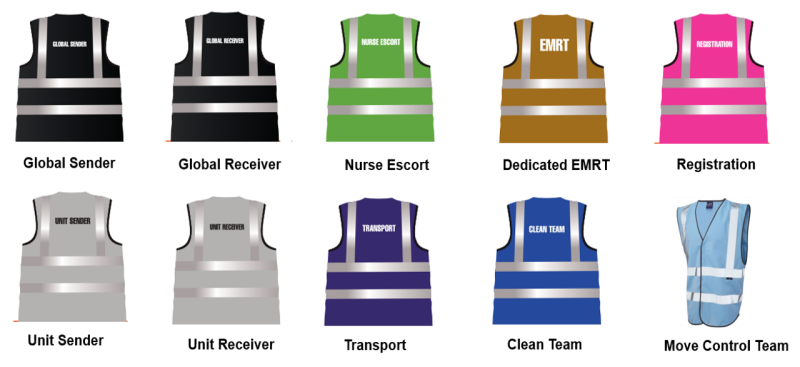 Registration will be positioned near the appropriate bed lifts and registration staff will assign each patient into their new bed space in Unity prior to their arrival on the wards.
Registration will be positioned near the appropriate bed lifts and registration staff will assign each patient into their new bed space in Unity prior to their arrival on the wards.
Important
As expected, both City and Midland Met will be extremely busy on move day.
Whilst we understand that it is an exciting time and staff will want to help and be involved, the more people on site, the harder the task will become. Therefore, unless working clinically or involved in one of the specific move roles, we ask that you don’t come to site.
Those needed on move day need to be fresh and well rested for the days following the move, as we settle.
If individuals do not have a role, HCR will ask them to leave.
Keeping City clean
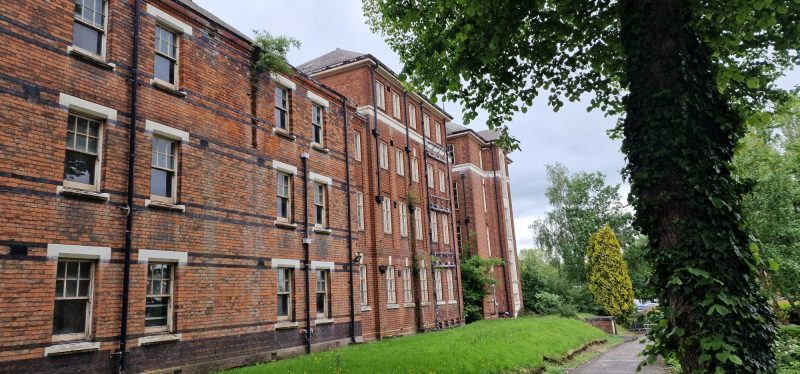
As we pack up our areas and prepare to move to Midland Met, everyone is asked to leave their areas at City clean and tidy.
With everyone chipping in to do their bit as we leave areas it will make things easier for the teams completing the site shutdown and the final checks.
Please remember to:
- Dispose of any rubbish, including food and drink items.
- Take any personal items, including coffee cups, photos and any clothing such as jackets, home with you.
- Safely dispose of any confidential waste in the confidential waste bins before you leave.
Important message for staff moving from City to MMUH – Windows
Equans have requested that all staff that are moving over the weekend check the windows in their office and ward areas to ensure they closed.
If there are any issues with the windows, please call the Equans Helpdesk on 0121 507 4444 and log a job for the window so once the area is clear, it is able to be locked down and secured.
Celebrating the history of City Hospital
As we draw closer to bidding farewell to City Hospital and moving into the Midland Met, it’s only fitting to take a moment to appreciate the rich history that has shaped this institution over the past 130 years. From its humble beginnings in 1887 to the cutting-edge medical facility it is today, City Hospital has been a pillar of healthcare in West Birmingham.



In the late 19th century, the foundations of an infirmary for the Birmingham Union Workhouse were laid, and, in 1889, City Hospital officially opened its doors. Designed by W.H. Ward, the infirmary adopted the revolutionary principles championed by Florence Nightingale, emphasising the care of non-infectious sick individuals. A quarter-mile long corridor connected nine pavilions, with open-air bridges allowing air circulation – a progressive approach in its time. Even Queen Victoria recognised the significance of this institution, gifting two volumes of books to launch a hospital library.
Over the years, City Hospital evolved with the times. X-ray facilities were introduced in 1912, and, by 1920, it became a District General Hospital, exclusively funded by the City Council. The hospital’s commitment to medical advancement continued with the introduction of obstetrics in 1922 and the inauguration of a deep X-ray department in 1925 by Mr. Neville Chamberlain, Minister of Health.

During the tumultuous periods of World War I and World War II, City Hospital played a crucial role. It treated over 54,000 military personnel during the First World War and transformed its maternity block into a casualty clearing facility for war-related casualties in the Second World War.
The post-war era marked the establishment of the National Health Service (NHS) on July 5, 1948, bringing City Hospital under the management of the Regional Hospital Board. The hospital flourished with milestones such as the opening of the first specialist diabetic clinic in 1950, the founding of Birmingham Hospital Radio in 1952, and the establishment of the Olga Snowden School of Nursing in 1959.
The 1960s witnessed significant expansions, including the construction of the Sheldon Block of wards and the opening of a postgraduate centre for medical students. The 1970s and 1980s saw the introduction of new departments, such as pathology and child assessment units, and the development of specialised facilities like the Birmingham Eye Hospital.
In the 21st century, City Hospital continued to modernise with the opening of the Birmingham Midland Eye Centre in 1996 and the Birmingham Treatment Centre in 2005 reflecting the Trust’s commitment to providing state-of-the-art healthcare.
But City Hospital’s legacy won’t be forgotten. The site’s history will live on in the proposed ‘City Hospital West’ development. Homes England plans to transform the land we vacate into a vibrant community featuring up to 750 high-quality homes, retaining the iconic Infirmary Front Range building for conversion into apartments. The plans ensure the new community development integrates with the Trust’s retained estate, creating a harmonious balance between the new neighbourhood and ongoing healthcare uses.
Tracheostomy education
The PDN’s from the Tracheostomy Cohort wards are offering Tracheostomy education on the following dates:
- 4 December 2024 – Sandwell Education Centre – 1pm-4pm
- 5 February 2025 – Sandwell Education Centre – 9am-12pm
- 5 March 2025 – Sandwell Education Centre – 9am-12pm
Please email swbh.acutemedicinepdn@nhs.net if you would like a place.
A warm ‘exec’ welcome to teams joining Midland Met
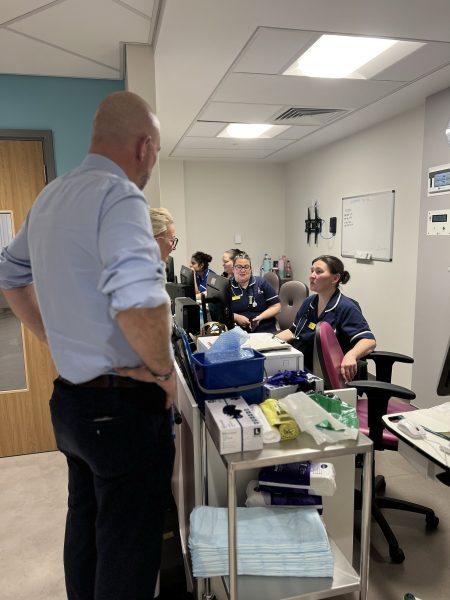
We are thrilled to share that today marked a smooth and successful move into Midland Met for our maternity, neonatal, and gynaecology services. Our tiniest patients are now safely settled in their new home, receiving the best care and attention.
Already, we’ve welcomed three new babies into the world here at Midland Met, including one born by c-section. It’s a special day that reflects the hard work of everyone involved in planning and preparing for this move.
Chief Exec, Richard Beeken and Managing Director, Rachel Barlow, were out and about visiting teams today, celebrating the successful moves and helping everyone to settle in.
Rachel shared a special message of thanks to everyone for their part in today’s move.
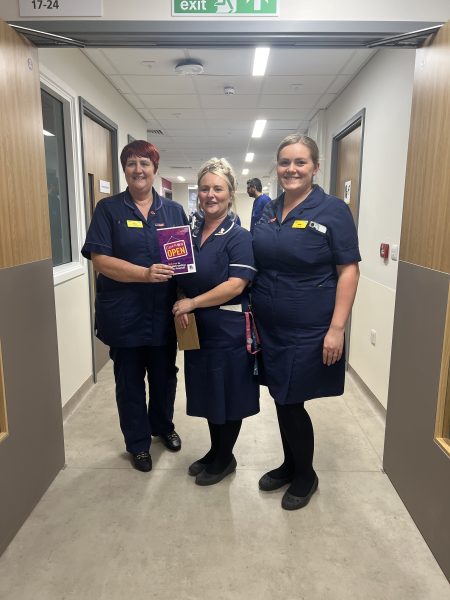
Here’s to our third and final move on Sunday.
Farewell to City Chapel celebration: 8 November
Our Chaplaincy service will be hosting farewell to City Chapel celebration which will also feature a multi-faith thanksgiving service and Diwali celebration on Friday 8 November, 12pm – 2pm.
Refreshments will also be provided and the event is open for all colleagues to attend on the day.
For more information please eddie.briones@nhs.net.
Special delivery – welcome to maternity, neonates and gynae
Today is a momentous day as we’ve completed our second patient move day, welcoming maternity, neonatal and gynaecology services to Midland Met.
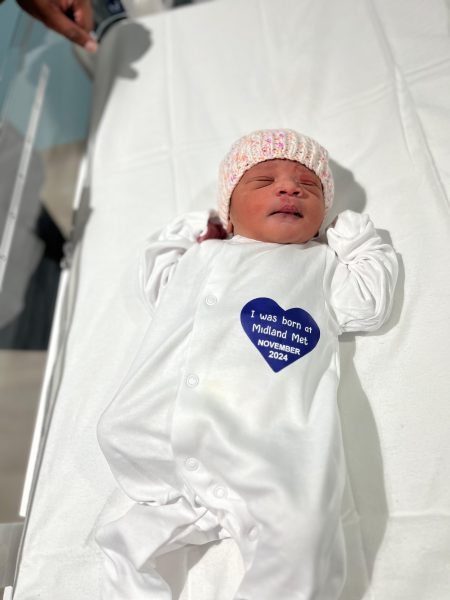
One by one, expectant mums arrived at our new maternity department, which includes a midwife led birthing unit with 15 birthing rooms, a delivery suite, two maternity wards, a neonatal unit and antenatal services. As part of the move, we’ve welcomed 18 mums, 12 babies, and 12 neonatal patients with seven admissions in gynae.
As new and expectant mums made their way into the hospital, they were warmly welcomed, and we’re pleased to say three babies have been born so far at Midland Met.
Our first arrival was baby Mona Lisa, is snuggled up in her Midland Met babygrow. Her proud dad shared his thoughts on his new bundle of joy and how much this moment means to him and his family.
← Older items Newer items →